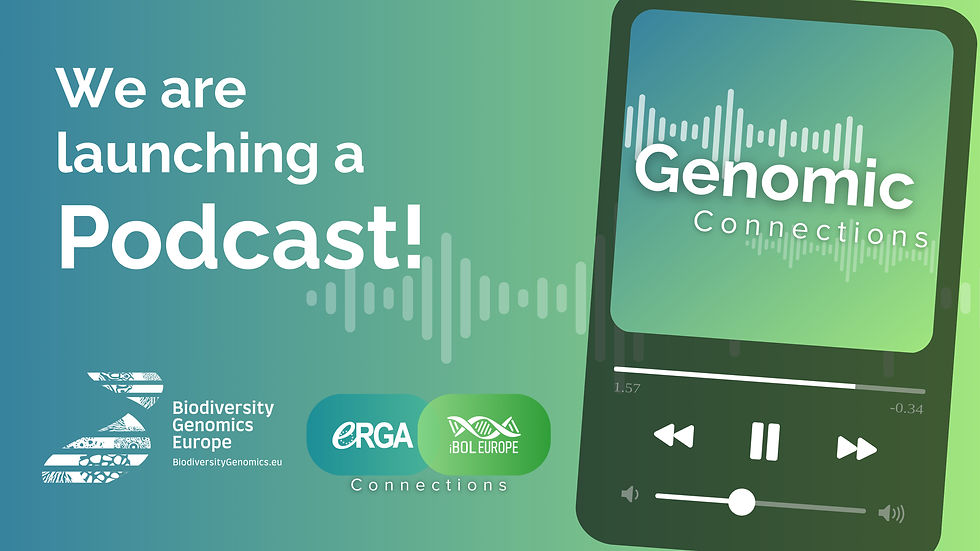Connecting people to fascinating European species: ERGA and BGE at the Long Night of Science Berlin
- luisamarins19
- Jun 27, 2024
- 3 min read
Updated: Jun 28, 2024
Dozens of scientific institutions and laboratories open their doors and invite visitors to discover their current research by interacting with scientists in an informal, playful atmosphere - that’s the spirit of the Lange Nacht der Wissenschaften (“Long Night of Science”) which happens every summer in Berlin. On Saturday, June 22nd, 2024, Biodiversity Genomics Europe and ERGA participated in the event for the first time with a stand organised by the BGE team from the Leibniz Institute for Zoo and Wildlife Research at Haus der Leibniz-Gemeinschaft in the heart of the German capital.
Our main goal was to spread information about BGE and the European Reference Genome Atlas (ERGA), highlighting the urgent need for conservation efforts for European species and discussing how state-of-the-art genomic technologies are helping to improve our understanding of biodiversity and advance its protection. We developed an interactive guessing game that allowed visitors to test their knowledge about some of the species that are having their genomes sequenced by BGE - with a particular focus on those of conservation concern.
Some snapshots of a very busy evening at the Haus der Leibniz-Gemeinschaft. You can find more photos of other activities here. Photos: Donat Agosti and Diego de Panis
The board game attracted visitors of all ages - including families with children, young adults, and senior citizens - through the duration of the event and promoted an exciting dialogue with this varied audience. “When I think of corals, I immediately picture Australia. I had no idea such beautiful species were also present here in Europe!” - said one of the visitors, referring to the Yellow Gorgonian (Eunicella cavolini), a common species in the Mediterranean Sea classified as “Near Threatened” by the International Union for Conservation of Nature (IUCN). Another case that surprised the visitors was the charismatic and critically endangered European mink (Mustela lutreola). Once widespread in Europe, its range has suffered a drastic reduction by over 85% since the mid-19th century due to habitat loss and illegal hunting. Only a few fragmented populations still exist and its genome, sequenced as part of the ERGA Pilot project, will bring insights that can support and guide management and conservation actions.

The Yellow Gorgonian coral, the Spanish moon moth and European White Elm illustrate the broad diversity of species sequenced by BGE and ERGA. Photos: albert kok, CC BY-SA 3.0, via Wikimedia Commons ; Banco de imágenes del CNICE - MEC, CC BY-SA 2.5 ES, via Wikimedia Commons; Christian Fischer, CC BY-SA 4.0, via Wikimedia Commons.
Many other fascinating species captivated the audience, such as the smallest bat species found in Europe (Pipistrellus hanaki), the beautiful Spanish Moon moth (Graellsia isabellae), and the gigantic European White Elm. The Long Night of Science offered a great opportunity to reach out to citizens and tell them a bit about what we do at BGE and ERGA and why. Science communication events like this one are a rewarding two-way street, allowing us to learn from each other and gather diverse perspectives that guide us forward as a community of researchers, advancing and advocating for the development of biodiversity genomics in Europe. We thank everyone who stopped by our stand and the organisers of this year’s Long Night of Science and look forward to participating again next year!
—
About
I’m Luísa Marins, and I coordinate communication actions for the European Reference Genome Atlas. If you want to know more about this event or the game, or if you would like help organizing a similar stand or any ERGA/BGE outreach activity across Europe, please reach out to media@erga-biodiversity.eu.
References









